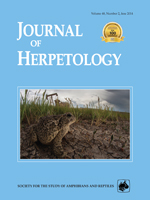Brightly colored frogs of Dendrobatidae contain alkaloid-based chemical defenses which appear to be utilized as a deterrent to predators. The conspicuous coloration of these frogs is generally considered to be an aposematic signal to color-visioned predators. A previous field-based experiment tested this hypothesis in the dendrobatid frog Oophaga pumilio (Strawberry Poison Frog) from the La Selva Biological Station using a stationary clay model experiment to assess natural predation. Avian predation rates on brown frog models were almost twice that of red frog models, supporting the hypothesis that coloration in O. pumilio is aposematic. A criticism of clay model experiments has been that they do not accurately represent natural organisms, especially with regard to movement. Many predators utilize movement in prey selection and, therefore, may not perceive motionless clay models as prey. In an attempt to understand the importance of movement better in assessing natural predation rates using clay model experiments, we conducted a similar field-based clay model experiment but instead used moving models of O. pumilio and of brown control frogs. Moving brown models were attacked more than nine times the rate of moving red models, supporting the finding of the previous study and providing further evidence that color is aposematic in O. pumilio. When compared directly to the previous study using stationary clay models, birds attacked moving brown models significantly more whereas red moving models were attacked significantly less. Our findings suggest that moving models may provide a better estimate of natural predator responses to an aposematic frog.
How to translate text using browser tools
1 June 2014
A Test of Aposematism in the Dendrobatid Poison Frog Oophaga pumilio: The Importance of Movement in Clay Model Experiments
Daniel J. Paluh,
Maggie M. Hantak,
Ralph A. Saporito
ACCESS THE FULL ARTICLE

Journal of Herpetology
Vol. 48 • No. 2
June 2014
Vol. 48 • No. 2
June 2014




